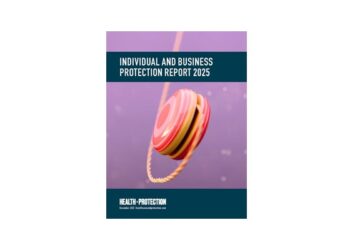Last month Health & Protection reported on research which drew a link between working excessive hours and increased chances of having a stroke or developing heart disease.
Speaking to those in the industry, Health & Protection discovered many firms were seeing signs from their clients that employees were starting to become overwhelmed and offered key insights for some of the ways employers can guard against staff burnout.
Debra Clark, head of specialist at Towergate Health & Protection (pictured), has broken this down for SMEs to give her top eight considerations they need to know about as the pandemic puts employees at greater risk than ever of suffering burnout.
1. What is burnout?
Burnout is mental, emotional and physical exhaustion related specifically to the workplace as a result of persistent, long-term stress.
2. What is the effect on SMEs?
The past year has been incredibly tough for everyone. With the effects being cumulative, for some people they may only just be beginning to show. For smaller companies, any absences will be harder to manage, with fewer options for providing cover. With many family businesses and often more of a family atmosphere, employees within SMEs may be more likely to struggle on through mental and physical illness, putting them at greater risk of burnout.
3. How is Covid increasing burnout?
The whole situation surrounding Covid carries an increased risk of employees reaching burnout. The move to flexible working would have seemed positive to some at first, but for others working remotely, from home, under different circumstances, or during different hours, brings a new level of anxiety. Added to this is the concern about future employment and generally having to juggle more demands. The work-life balance is lost for many as work becomes a more integral part of life and the boundaries become significantly blurred. What began for many as working from home, has now become living at work.
4. How can employers help?
It is crucial that prevention and intervention are part of the company’s health and wellbeing programme, and there are many options to ensure employees are directed to or given the right support. Now is the time for employers to ensure they have everything in place to offer employees the support they need, and clearly communicate it or risk burnout.
5. What options are available?
Health and wellbeing solutions have been ramped up in light of Covid and employers need to be aware of what is available and make provisions for their workforce, such as virtual GPs, online support services, specialist apps, health assessments and training.
6. How can you minimise the impact?
It is important to assist with preventing burnout and minimise the impact it has on an individual by quickly recognising the signs and providing interventions and support as soon as possible.
7. How can you minimise the risk?
We all have down days, but burnout is a consequence of ongoing, long-term pressures and it can have a devastating effect. Implementing wellbeing benefits is not the soft option. They tackle a very real problem that affects the company as a whole and not just the individual employee. Putting measures in place now will minimise the risk in the future.
8. What role does company culture play?
Burnout may be as much down to the culture of the company as to the way the individual deals with the stresses, so employers must think carefully about what they are offering staff by way of support and in terms of boosting morale, mental health and positivity.






